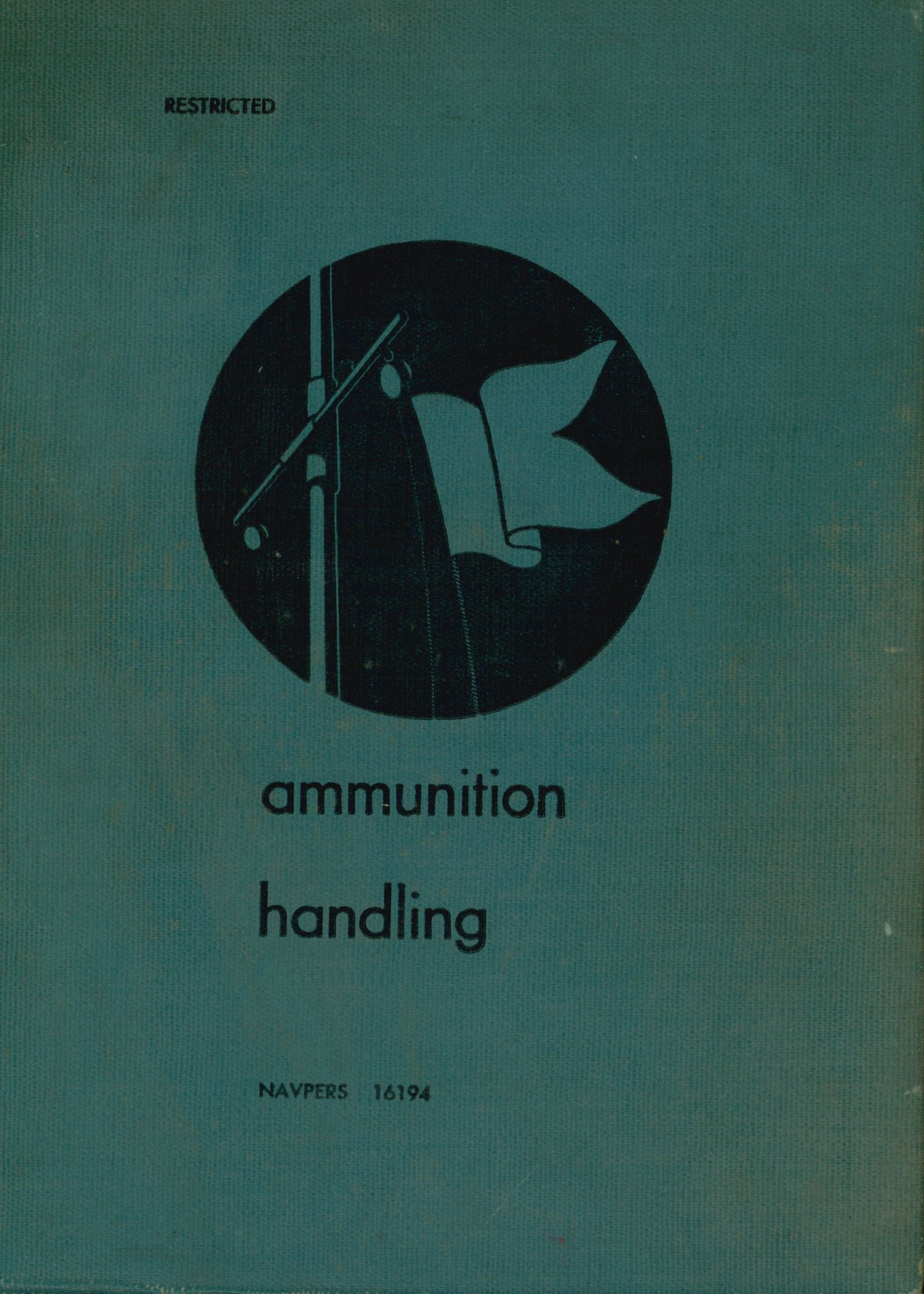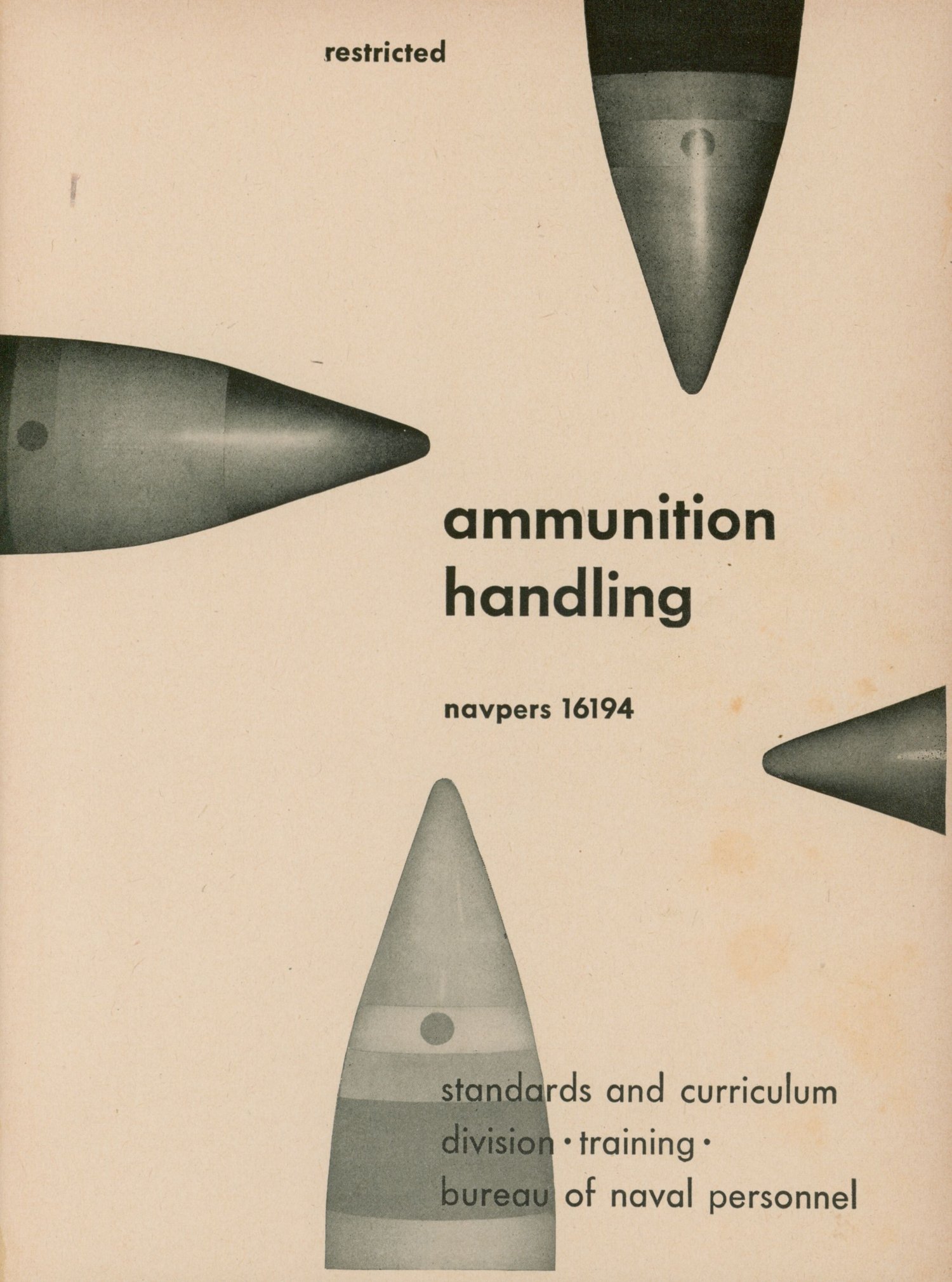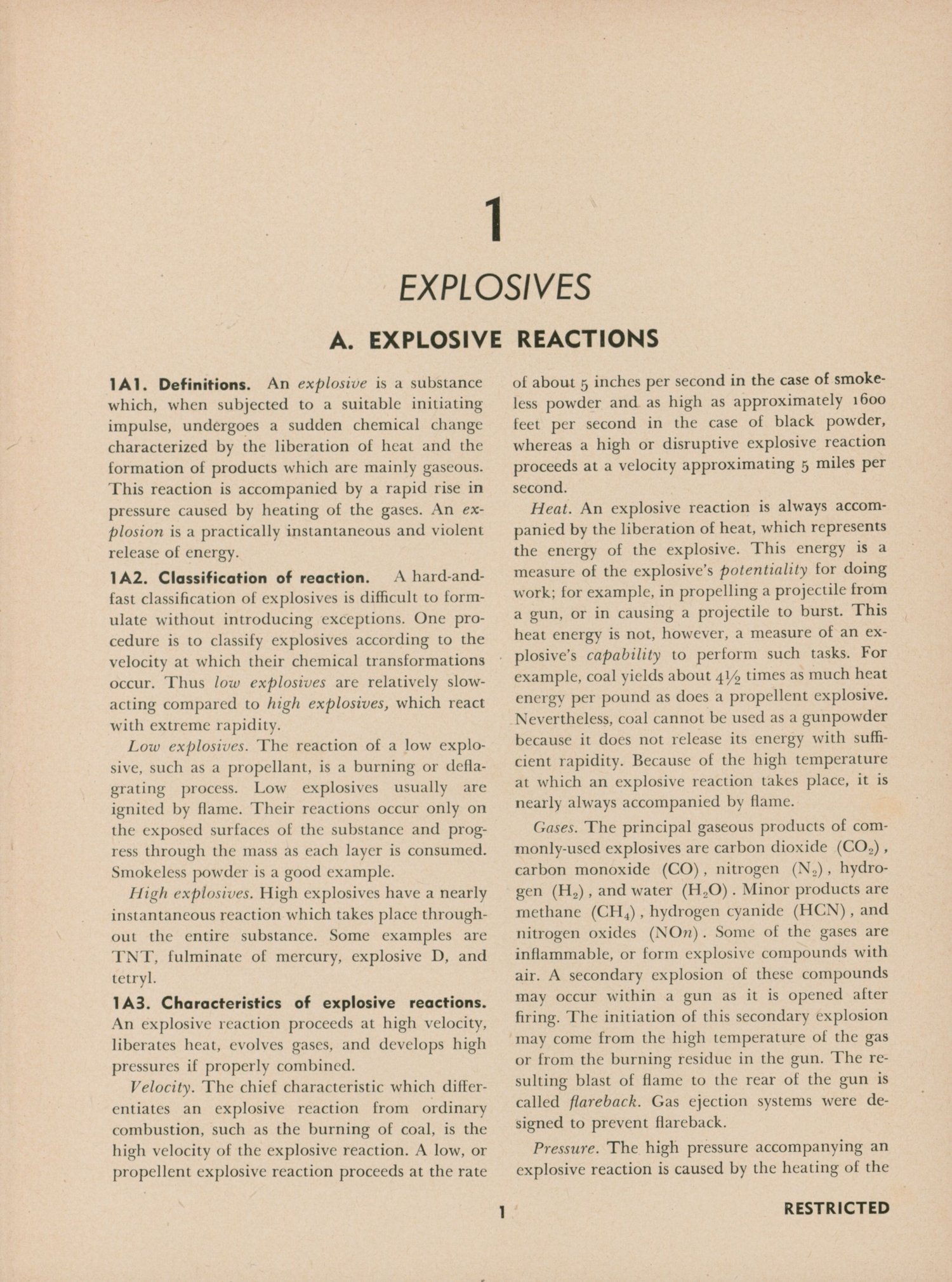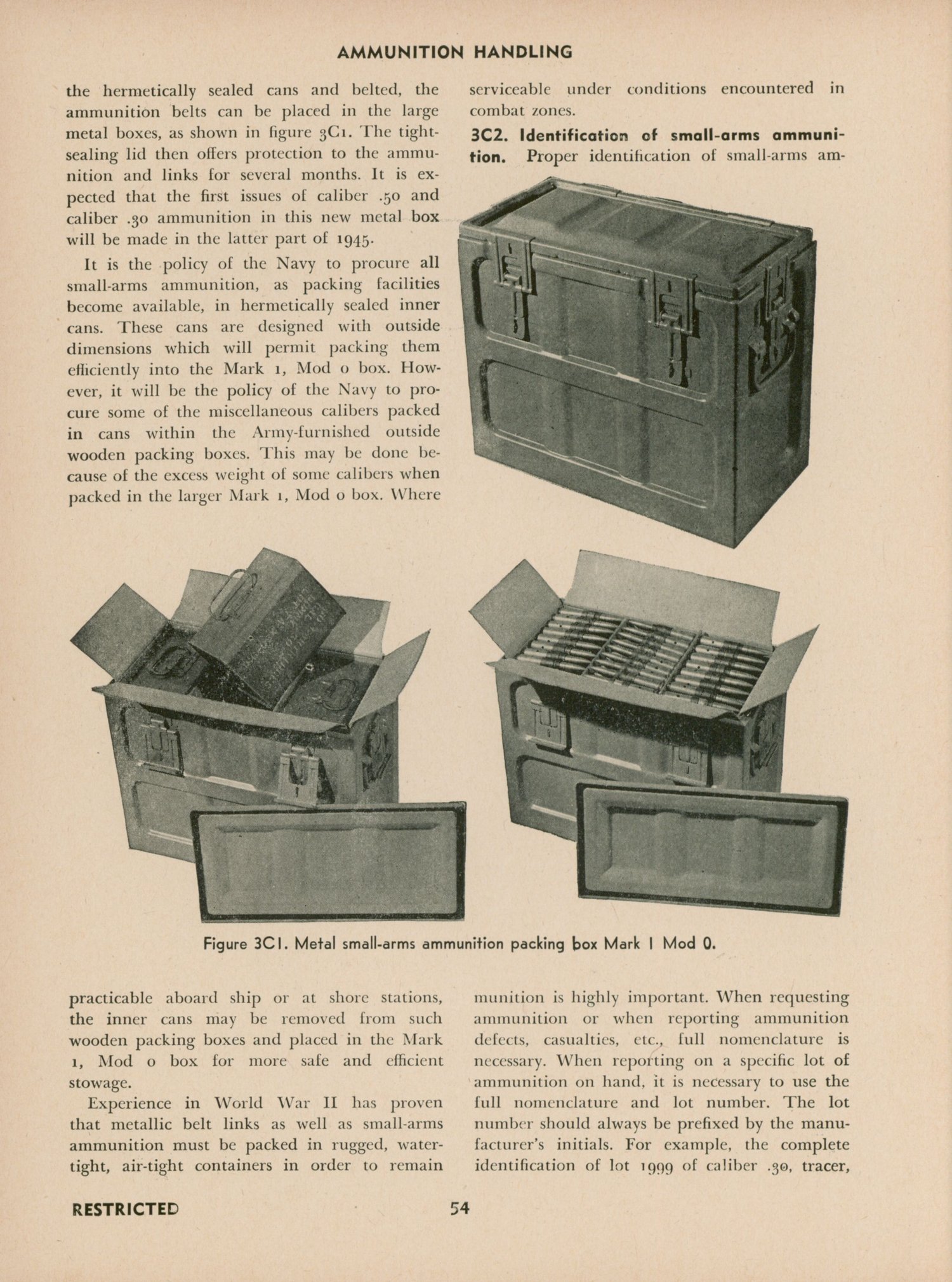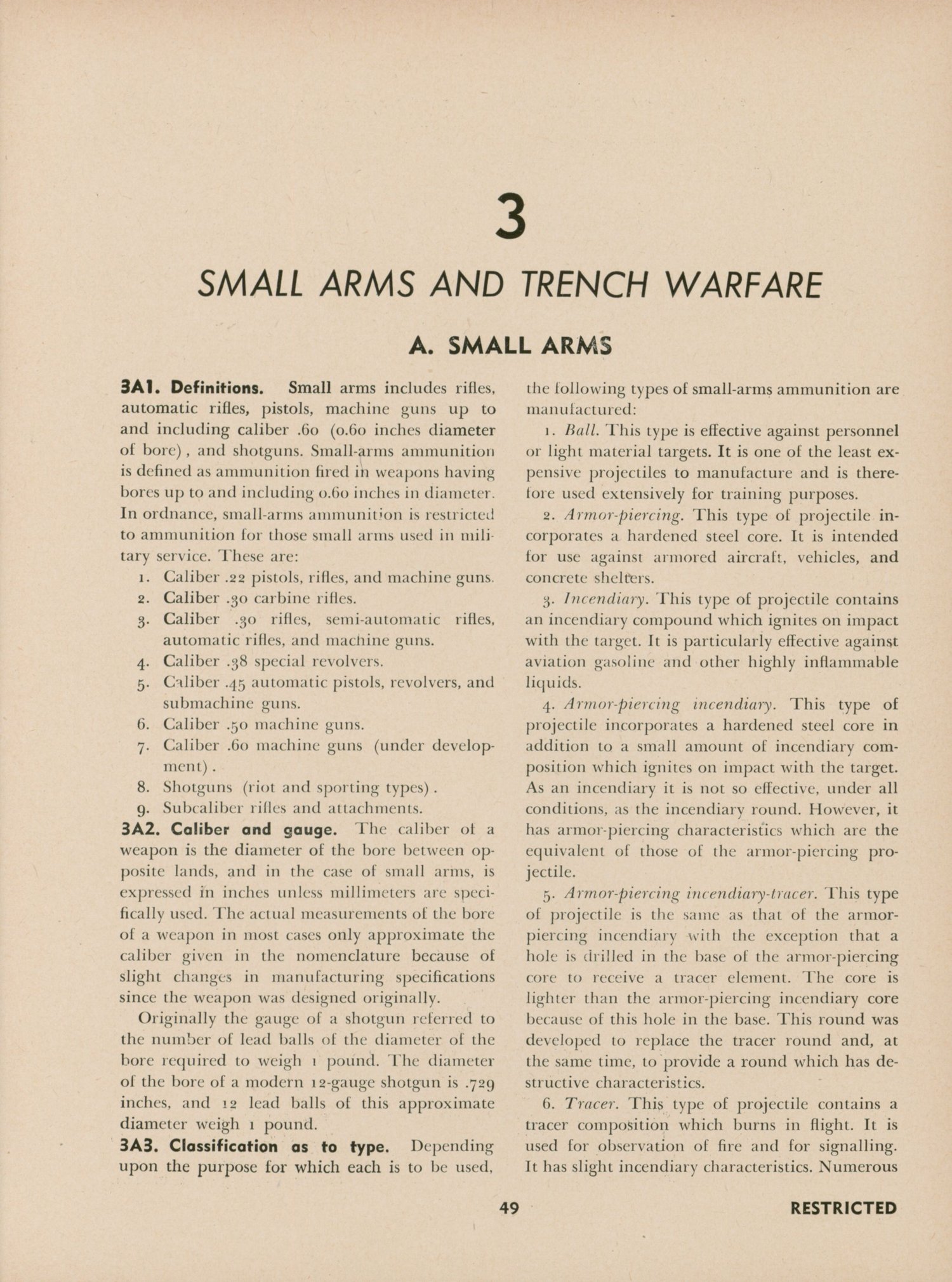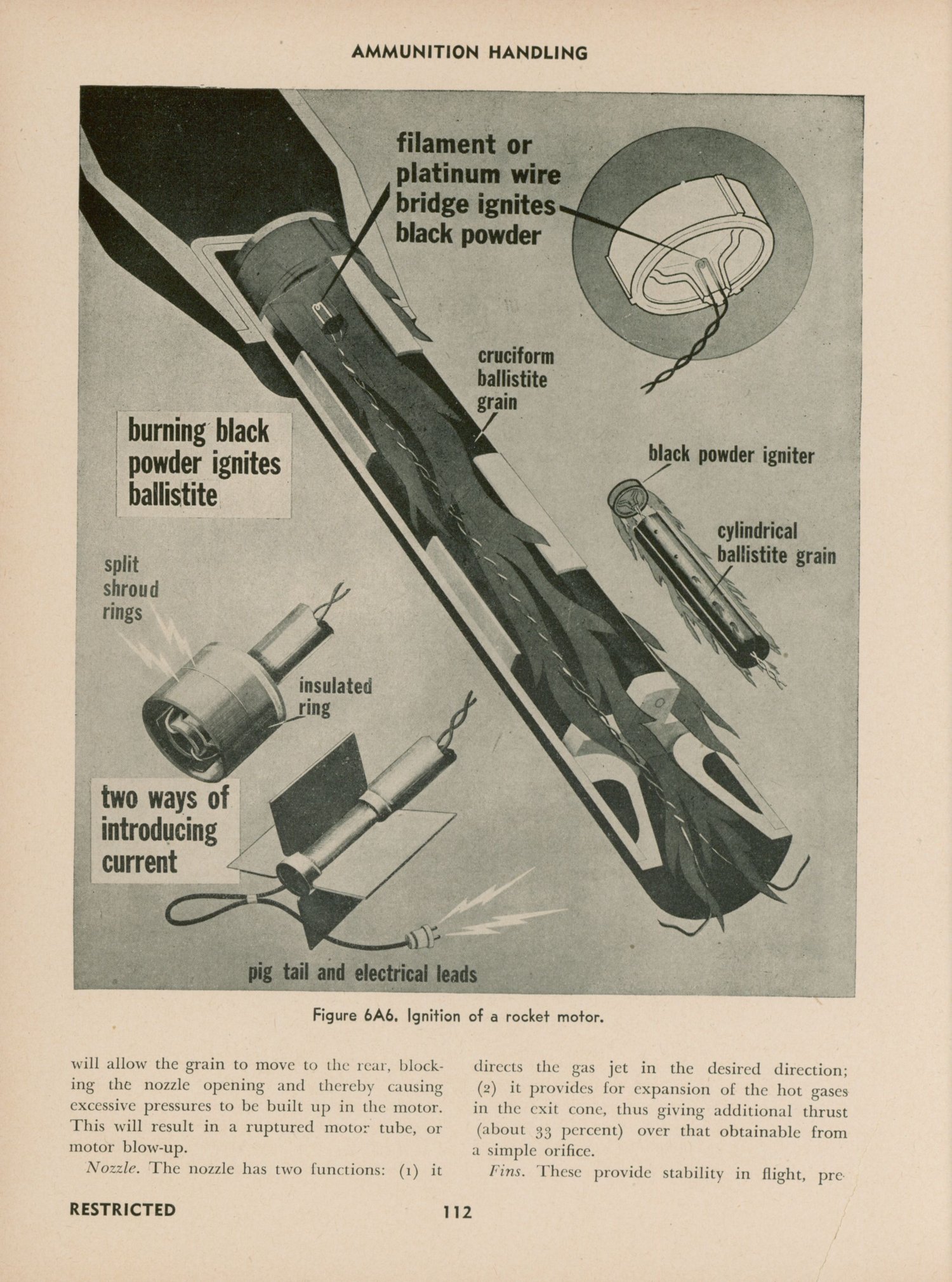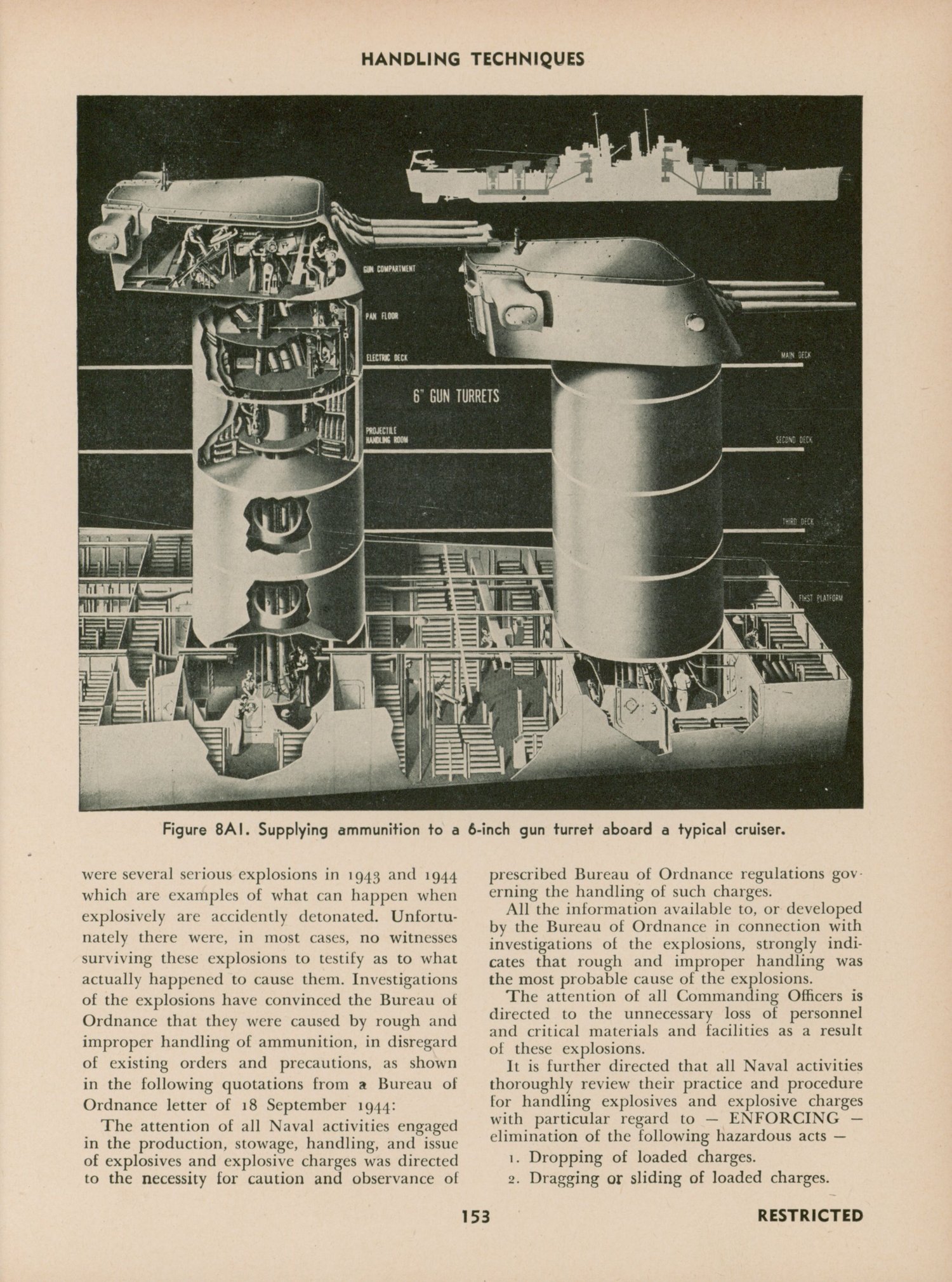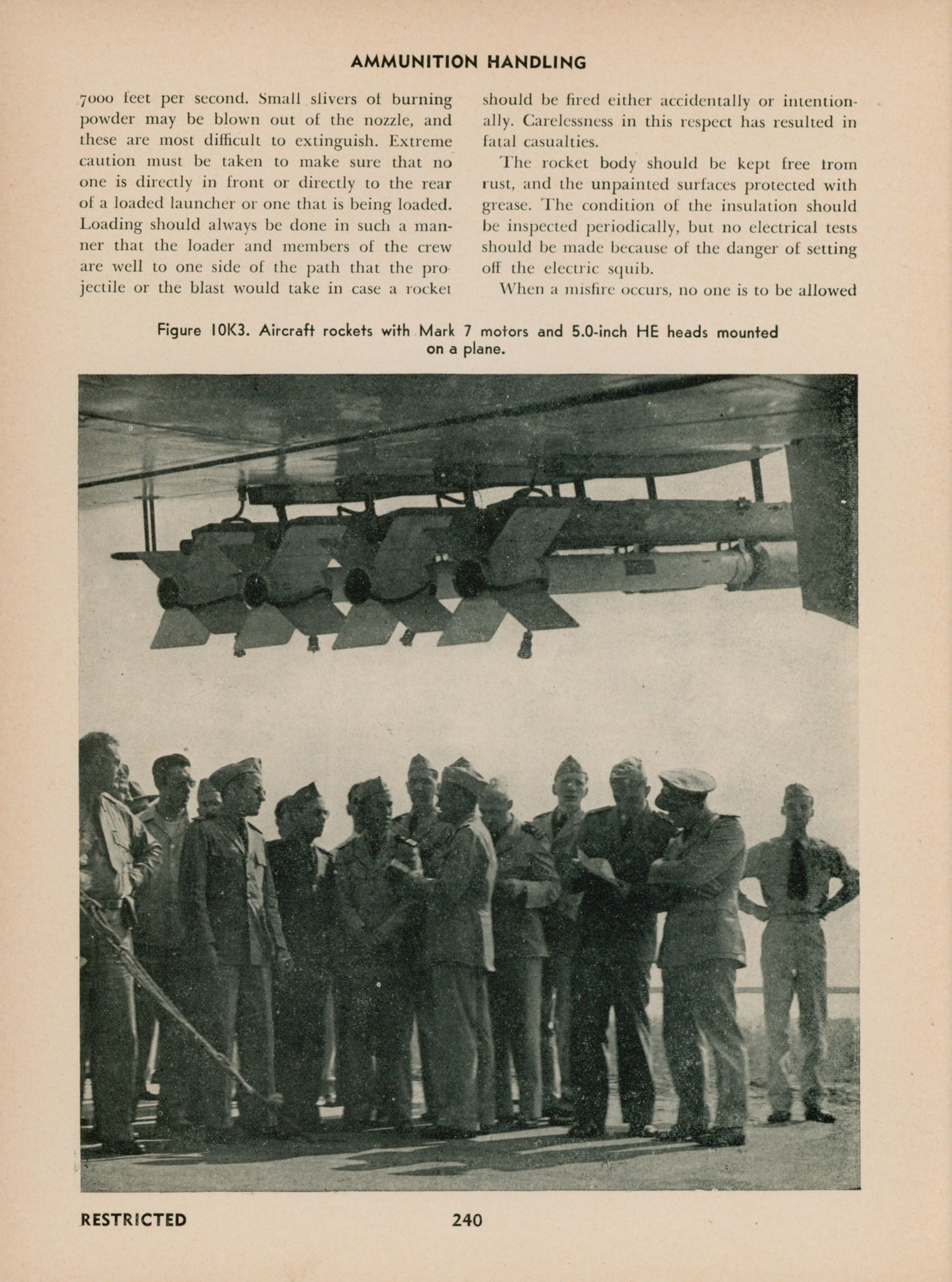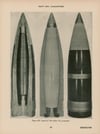Ammunition Handling NAVPERS 16194 (1945)
Ammunition Handling NAVPERS 16194
Standards and Curriculum Division, Training, Bureau of Naval Personnel
USGPO, 1945
This training manual is based on Navy Regulations, on official Bureau of
Ordnance Publications, and on procedures developed at NTSch (Ammunition
Handling), Camp Peary, Virginia.
PREFACE
The effectiveness of our Navy in combat has been proved by its many victories over the enemy. This success is due in a large part to the vast superiority of our weapons. But even the best weapons are of no avail unless a steady flow of ammunition is maintained to supply these weapons.
Ammunition includes bullets, fuzes, detonators, grenades, projectiles, bombs, warheads, mines, depth charges, pyrotechnics, etc., containing high explosives. Supplying ammunition necessitates the safe transferring of high explosives from depots to lighters, from lighters to ammunition ships, from ammunition ships to combatant ships, from stowage compartments to the ships’ guns.
High explosives, when handled in accordance with the prescribed regulations, are relatively safe. Safety regulations are set forth in U. S. Navy Regulations and in the Bureau of Ordnance Manual. Many of the regulations and precautions embody the lessons learned as a result of actual disasters. They must be obeyed without exception. They cannot be changed or disregarded. To any man who is mindful of his own and his shipmates’ safety, they have the force of absolute laws.
In the early days of the war, it became obvious that something must be done to decrease the number of accidental explosions, which was mounting steadily with the increasing number of personnel handling ammunition. The Navy’s answer to this problem was the establishment of ammunition handling schools. The first handling school was set up at Hingham, Mass., followed by the Shipboard Ammunition Handling School at Yorktown, Va. (recently transferred to Camp Peary, Williamsburg, Va.). Since that time other schools have been set up on both the Atlantic and Pacific coasts.
To meet the needs of these schools, Ammunition Handling has been prepared as a basic text for the training of officers and leading petty officers in the proper methods and techniques of handling and stowing ammunition. Such training is more in the nature of a refresher course, since all personnel involved will have been previously attached to the gunnery department aboard combatant ships.
This publication is not intended to replace any Bureau of Ordnance publication. Rather, it represents a compilation of information contained in U. S. Navy Regulations, the Bureau of Ordnance Manual, and other Bureau of Ordnance pamphlets and circular letters. Furthermore, only material of a Restricted classification has been included, thus making this publication available to all enlisted men detailed to handle ammunition.
It must be recognized that new regulations will be issued from time to time and new weapons and explosives will be introduced. Therefore, it will be the responsibility of the individual instructor at the various schools to supplement this text with the latest information. All direct quotations from Navy
Regulations have been printed in italic.
Contents
CHAPTER I. EXPLOSIVES.
A. Explosive Reactions
B. Service Explosives and Their Uses
C. U. S. Navy Cavity Charges
CHAPTER 2. NAVY GUN AMMUNITION.
A. General
B. Powder Bag Charges
C. Cartridge Cases
D. Primers
E. Impulse Ammunition
F. Projectiles
G. Identification
H. Fuzes and Tracers
CHAPTER 3. SMALL ARMS AND TRENCH WARFARE.
A. Small Arms
B. Small-Arms Ammunition
C. Packing Small-Arms Ammunition
D. Trench-Warfare Ammunition
CHAPTER 4. BOMB-TYPE AMMUNITION.
A. General
B. Depth Charges
C. Torpedo Warheads
D. Aircraft Bombs
CHAPTER 5. PYROTECHNICS AND CHEMICAL AMMUNITION.
A. Pyrotechnics
B. Pyrotechnic Projectors and Pistols
C. Pyrotechnic Signals—Ships and Aircraft
D. Pyrotechnic Illuminants—Aircraft
E. Chemical Ammunition
CHAPTER 6. ROCKETS.
A. General
B. Handling and Stowage of Rockets
C. Aircraft Rockets (AR)
D. Ground and Shipboard-Mounted Rockets
E. Spin-Stabilized Rockets
F. Rocket Fuzes
CHAPTER 7. AMMUNITION REQUISITIONS, RECORDS AND REPORTS.
A. General
B. Ammunition Procurement
C. Receipt of Ammunition
D. Reports and Returns
E. Ammunition Casualty Reports
CHAPTER 8. HANDLING TECHNIQUES.
A. General
B. Regulations, Safety Orders, and Precautions
C. Handling of Ammunition and Explosives
D. Use of Fiber Line and Wire Rope
CHAPTER 9. MAINTENANCE AND SALVAGE OF AMMUNITION.
A. General
B. Smokeless Powder
C. Return of Ammunition
D. Bag Gun Ammunition
E. Semi-fixed and Fixed Ammunition, Three-Inch and Larger
F. Small-Arms Ammunition
G. Heavy Machine-Gun Ammunition
H. Chemical Ammunition
I. Pyrotechnic Ammunition
J. Bomb-Type Ammunition
K. Impulse Ammunition
L. Rockets
CHAPTER 10. SAFETY ORDERS, PRECAUTIONS AND INSTRUCTIONS.
A. Origin and Necessity
B. General Safety Precautions
C. Explosives
D. Gun Ammunition
E. Bomb-Type Ammunition
F. Detonators
G. Non-Persistant Gas Munitions
H. Ship’s Chemical Smoke Munitions
I. Small-Arms Ammunition
J. Pyrotechnic Ammunition
K. Rocket-Type Ammunition
L. Embarking and Discharging Ammunition
CHAPTER II. SOURCES OF ORDNANCE INFORMATION.
A. General
B. Bureau of Ordnance Publications
C. Distribution
INDEX
266 pages
121 photos/illustrations

